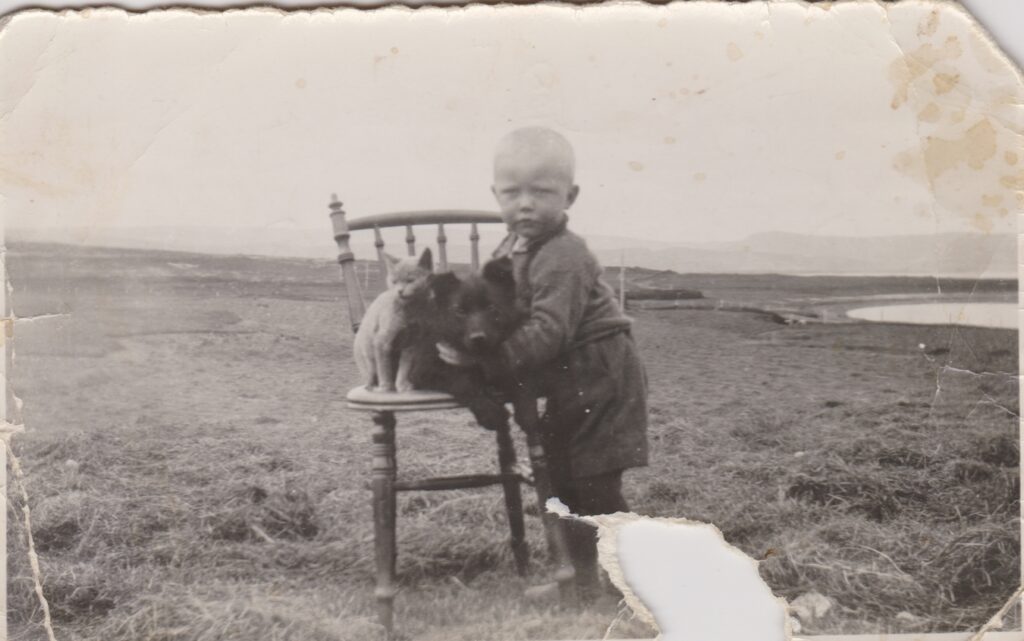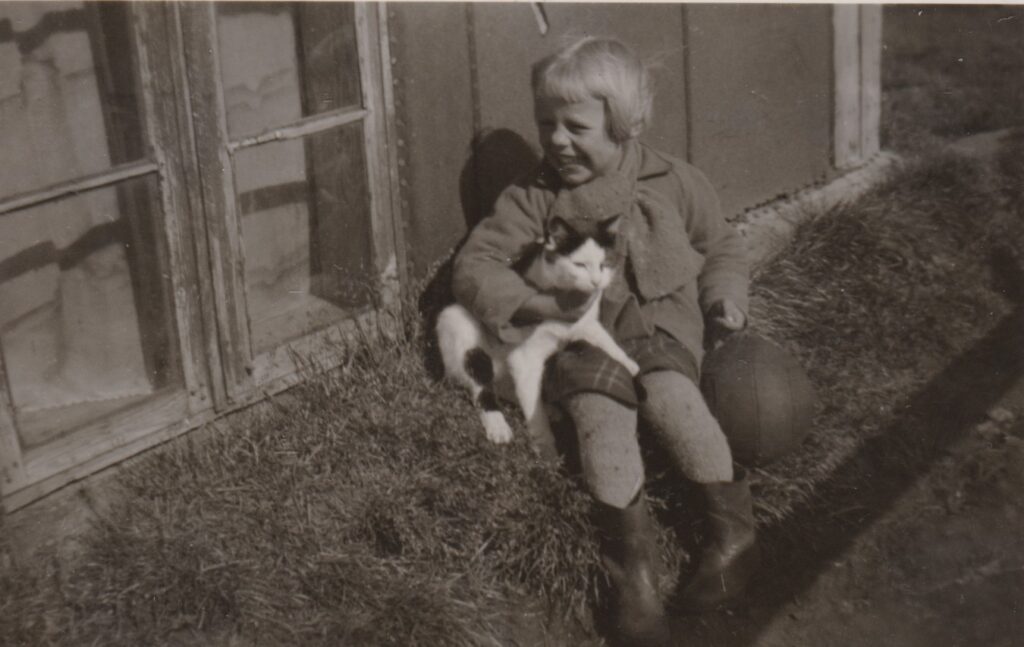Benedikt and Ragnheiður at Kirkjuból farm
The Memorial Square Rætur (Roots)
The memorial square Rætur has been established in honor of the couple at Kirkjuból:
Benedikt Grímsson (b. April 17, 1898 – d. July 21, 1980) and
Ragnheiður Lýðsdóttir (b. June 22, 1895 – d. September 1, 1983)
Their memory lives on.
The Family at Kirkjuból
Benedikt Guðmundur Grímsson and Ragnheiður Lýðsdóttir were married at Kollafjarðarnes Church in the summer of 1925 and took over the farm at Kirkjuból that same year. Ragnheiður was the daughter of Lýður Jónsson and Anna Magnúsdóttir farmers at Skriðinsenni in Bitrufjörður, the youngest of twelve siblings. Benedikt was the son of Grímur Benediktsson and Sigríður Guðmundsdóttir farmers at Kirkjuból, the latter originally from Víghólsstaðir on Fellsströnd in Dalasýsla. Benedikt was named after his two older brothers who both drowned as young boys in Kirkjubólsgil.
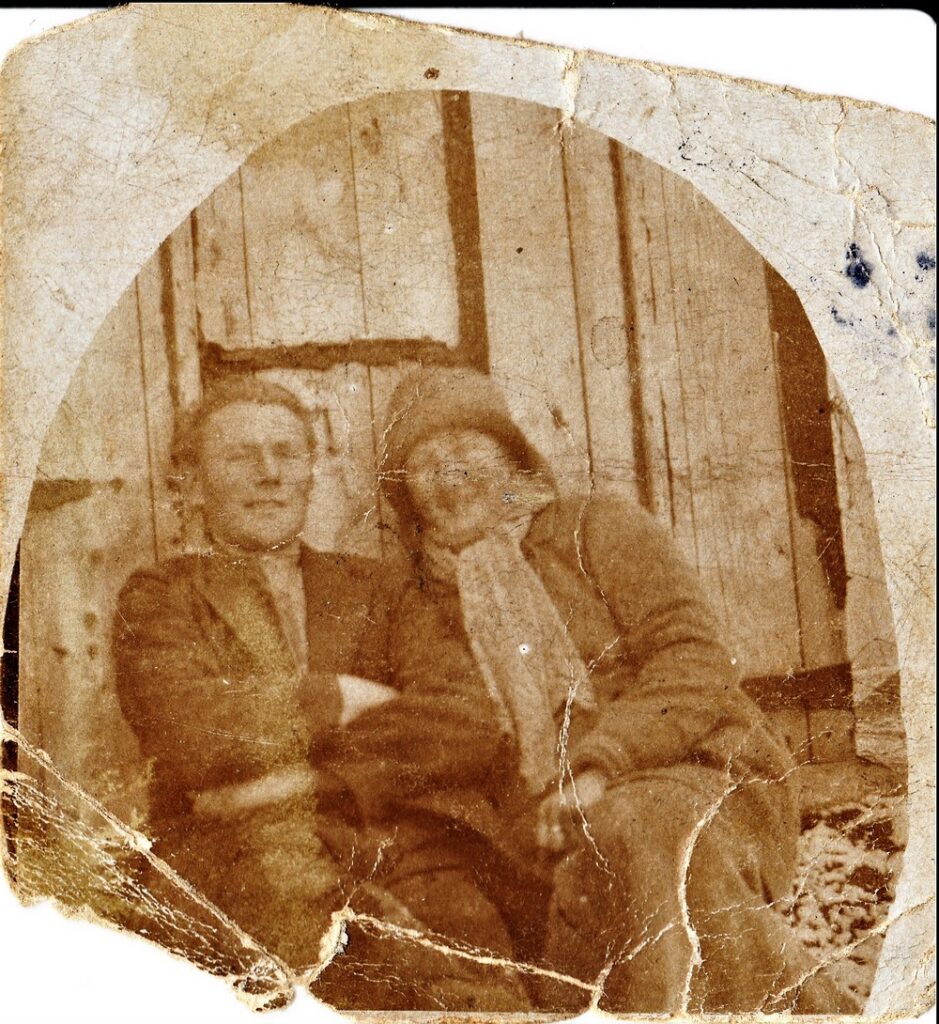
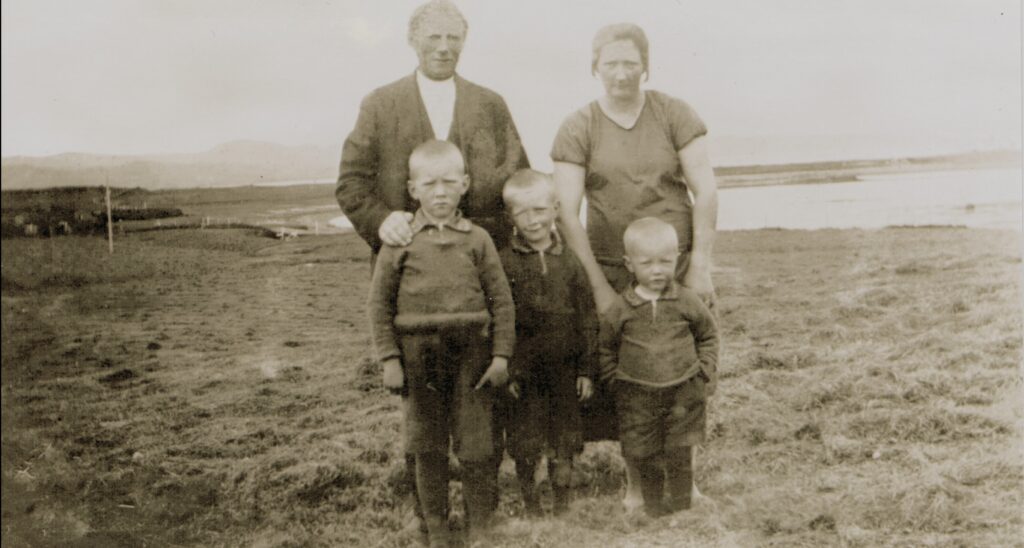
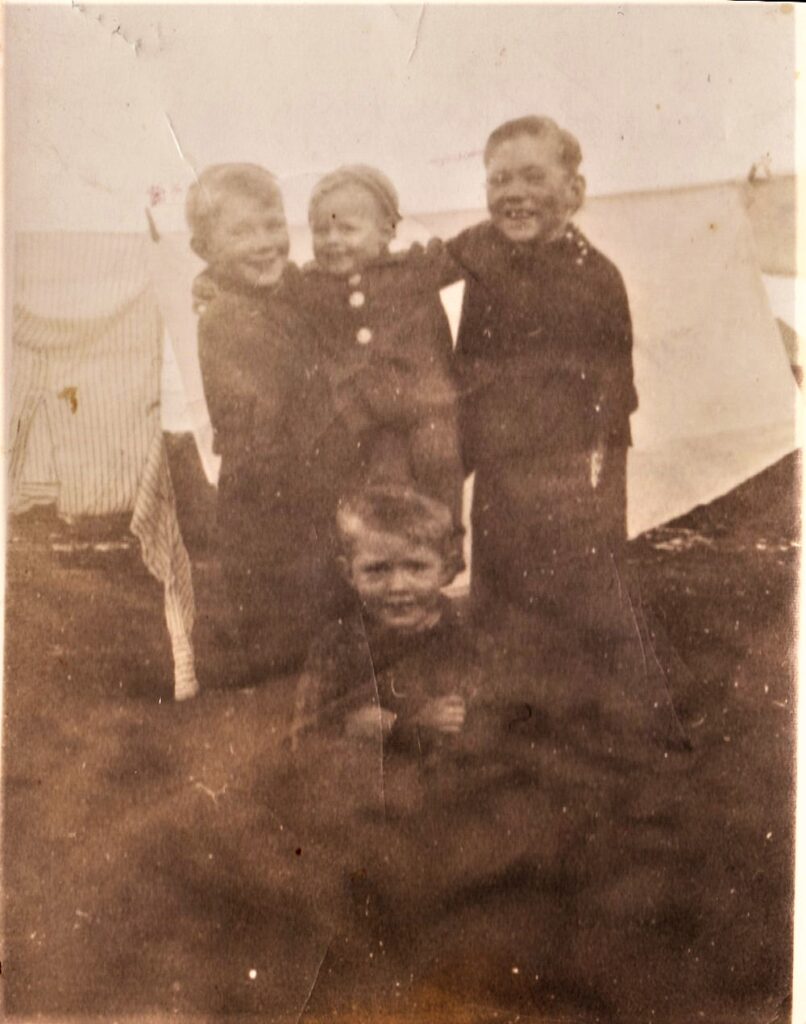
Benedikt and Ragnheiður had four children:
- Grímur (b. 1927 – d. 2018)
- Sigurður Matthías (b. 1928 – d. 2005)
- Lýður Valgeir (b. 1931 – d. 2021)
- Rósa Jónída (b. 1936 – d. 2018), whom they adopted
Grímur’s wife was Kristjana Halla Ingólfsdóttir (b. 1930 – d. 2017) from Gilhagi in Hrútafjörður. They lived most of their lives at Kirkjuból. Their children: Benedikt Guðmundur, Anna Inga, and Gunnar Rúnar.
Sigurður’s wife was Sigrún Kristín Valdimarsdóttir (b. 1940 – d. 2019) from Hólmavík. They lived at Kirkjuból and later in Hólmavík. Their children: Kristinn, Valdís Eyrún, and Benedikt Heiðar.
Lýður’s wife was Helga Guðrún Valdimarsdóttir (b. 1938 – d. 2023), also from Hólmavík and sister of Sigrún. They lived in Reykjavík. Their daughters: Ragnheiður and Linda Bára.
Rósa Jónída lived in Reykjavík. Her daughter: Jóhanna Björg Pálsdóttir.
Farming at Kirkjuból
After Benedikt and Ragnheiður started farming at Kirkjuból in 1925, the years that followed were marked by significant development. The couple were exceptionally industrious in improving the land and farming operations over the half-century they worked the farm. They replaced the older turf and timber buildings of earlier times with new concrete structures. A new residential house was built in 1946, replacing a turf-roofed baðstofa (communal living room) with timber gables, built in 1907, which was in poor condition by then. The master builder for the new house was Ragnheiður’s brother, Brynjólfur Lýðsson.

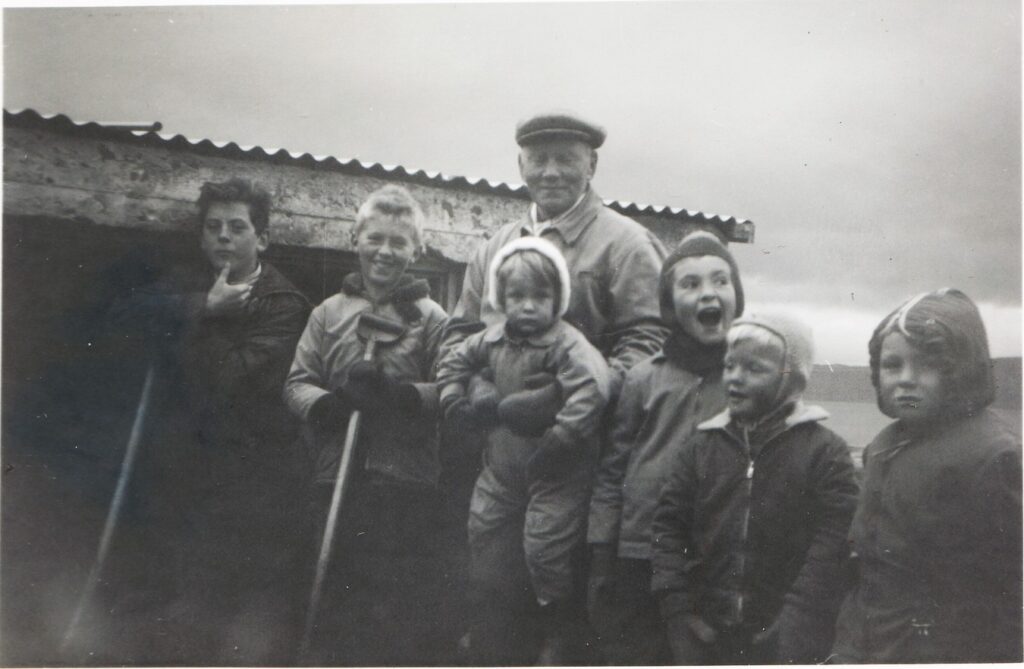
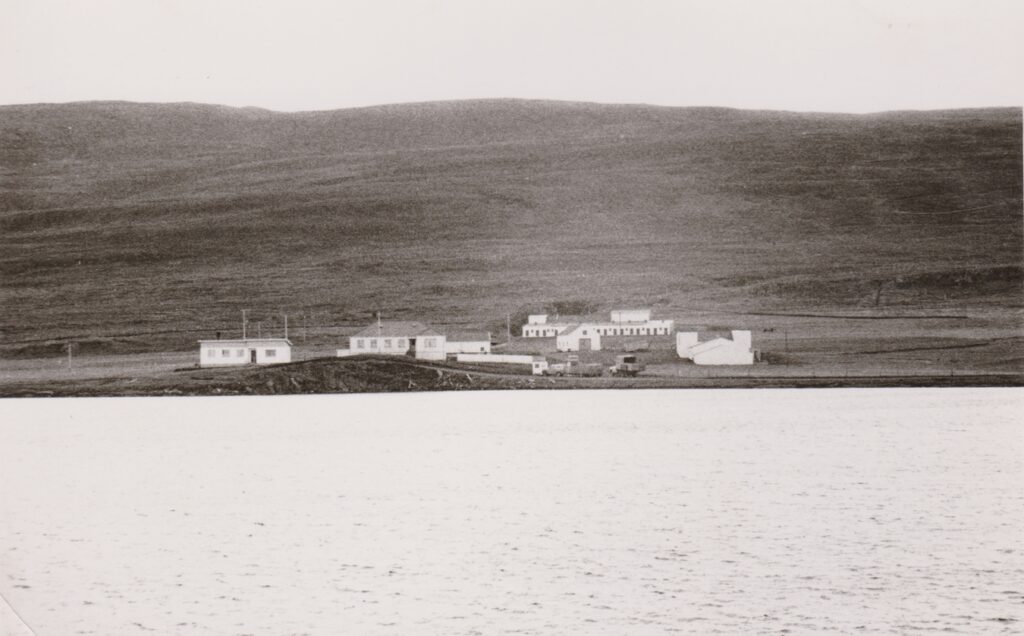
The cultivated fields were also significantly expanded. The couple worked side by side on these improvements. Ragnheiður was active in the outdoor work, even mixing concrete during the construction with her husband. They received valuable help from relatives, friends, and neighbors for many farming tasks and building projects. Benedikt’s sister, Ragnheiður Grímsdóttir (1893–1961), lived with them all her live and contributed to the household and farmwork. Many children stayed at Kirkjuból during summers and all helped out.
The couple’s two eldest sons, Grímur and Sigurður, later took over the farm from their parents, while their siblings settled in the south of Iceland. Sigurður and his wife Sigrún built a second house beside the old one and moved in around 1963.
The brothers ran a joint sheep farming operation and for some years they kept dairy cows, selling milk to Hólmavík. Both had side jobs in addition to farming: Sigurður was a carpenter, and Grímur managed the local savings bank, originally Sparisjóður Kirkjubóls- og Fellshreppa, later called Sparisjóður Strandamanna.
Community work and positions of trust
Benedikt and Ragnheiður certainly did not sit idle. Life at Kirkjuból was lively and bustling. Before Sævangur came into existence, workshops were occasionally held at Kirkjuból, and the couple frequently hosted numerous guests due to their involvement in various community activities and projects. Benedikt’s extensive participation in a wide range of social endeavors is truly remarkable.
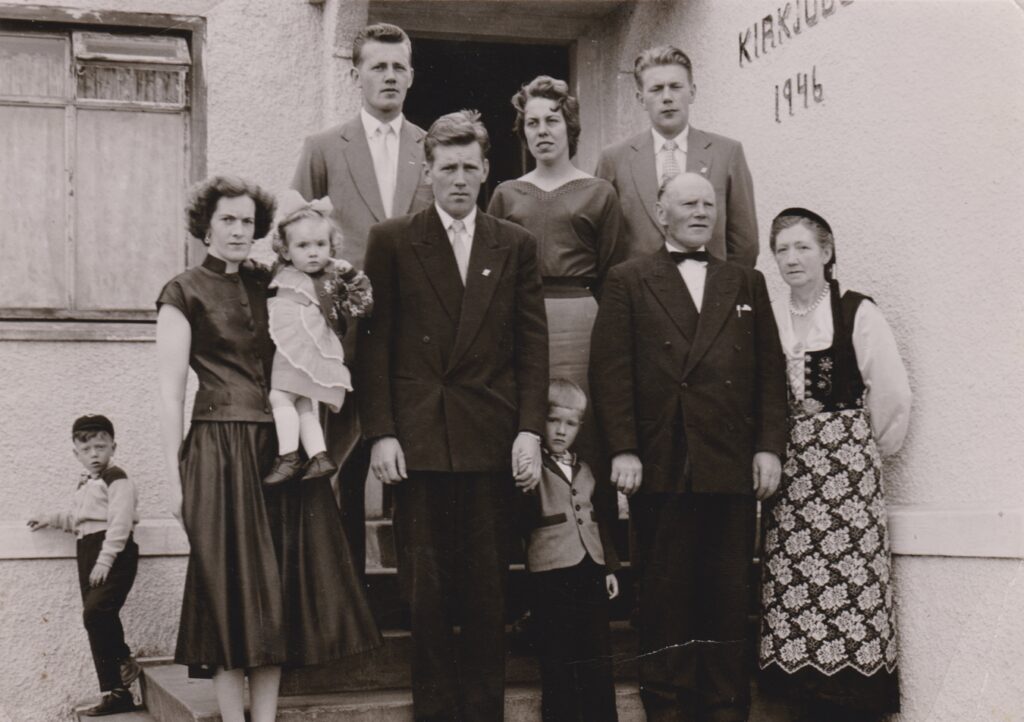
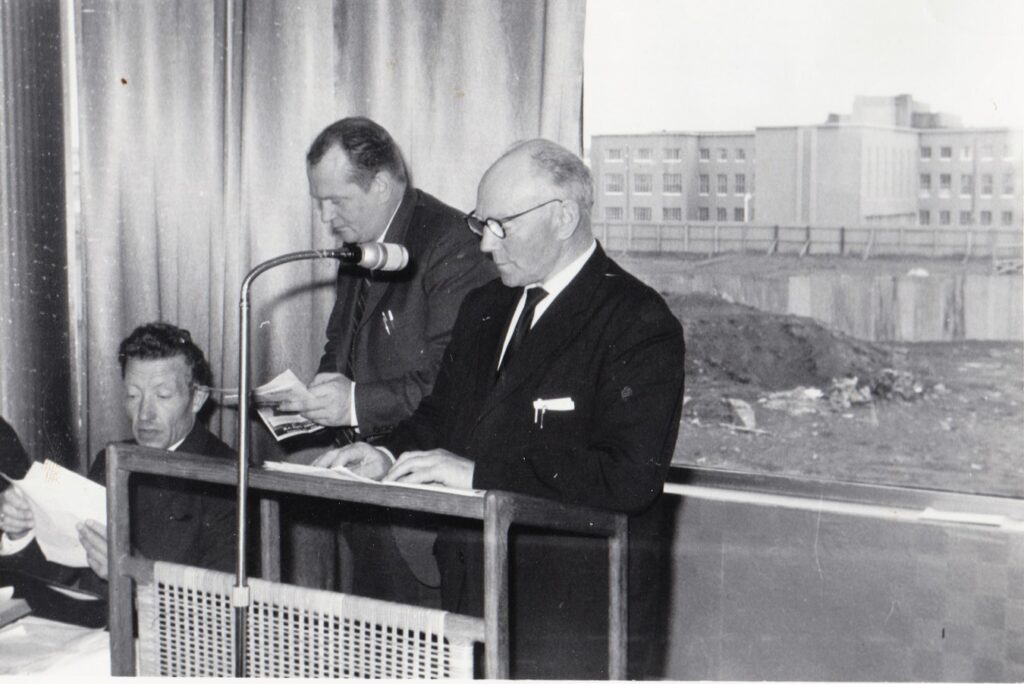
Benedikt played a leading role in youth association activities and agricultural societies in the region. He also held numerous trusted positions, both locally and beyond, which often required him to attend meetings or travel. He served as chairman of the Agricultural Association of Strandir from its establishment in 1944 until 1973 and represented the association at the National Agricultural Assembly from 1951 to 1970. Additionally, he was a delegate at the Farmers’ Union General Meeting from 1945 to 1970 and served as a meat inspector in slaughterhouses in the Westfjords for many years, traveling throughout the region.
At home, Benedikt also carried various responsibilities. He was the district commissioner for over 40 years, served on the municipal council for a long time, and was a member of the county council for decades. He was the treasurer and manager of the local savings bank for 30 years and, for a time, served on the board of the Steingrímsfjörður´s Cooperative Society (Kaupfélag Steingrímsfjarðar).
Ragnheiður attended the Women’s College in Blönduós, an education that undoubtedly proved useful given the frequent visitors at Kirkjuból. At that time, household chores typically fell to the housewife. Ragnheiður often had to manage both household and farm duties while Benedikt was away but received great support from her children, friends and family.
Ragnheiður was an active participant in community work in her local area and district. She was one of the founders of the women’s association Björk in Kirkjubólshreppur, established on June 19, 1948, and served as its chair for the first 15 years. She also led the founding of the Women’s Association of Strandasýsla in 1949 and was its chair for several years.
Sævangur and the Memorial Square
This memorial square, located in front of the community center Sævangur, was established to honor Benedikt Guðmundur Grímsson and Ragnheiður Lýðsdóttir who lived and farmed at Kirkjuból. In their time, they donated the land on which Sævangur and the adjoining sports field stand—for the benefit of social and cultural life, sports, and youth activities in the area.
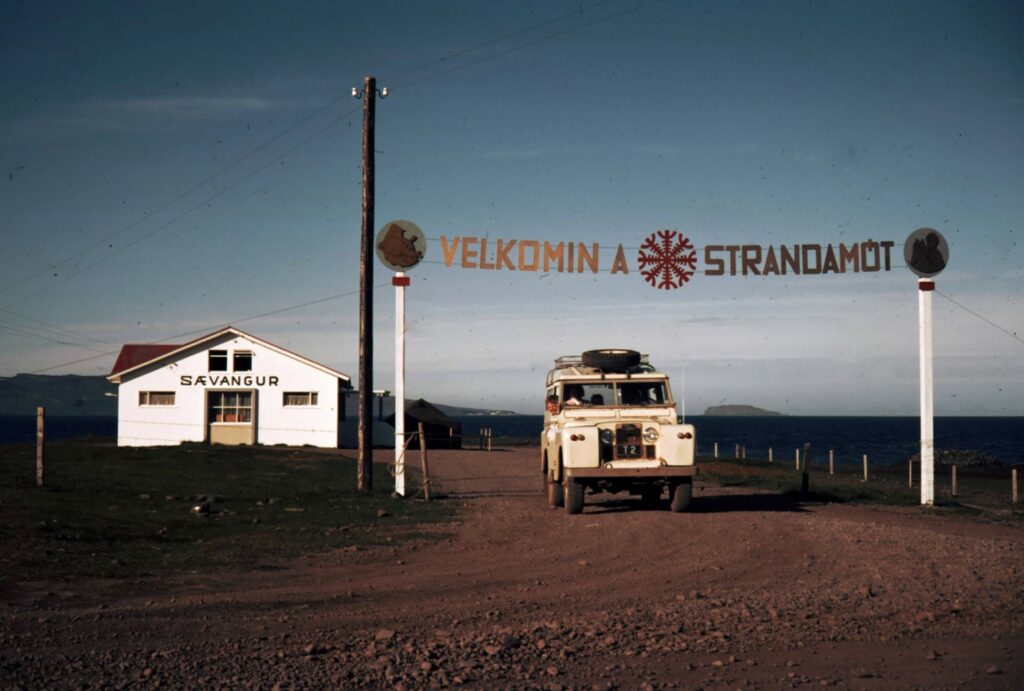
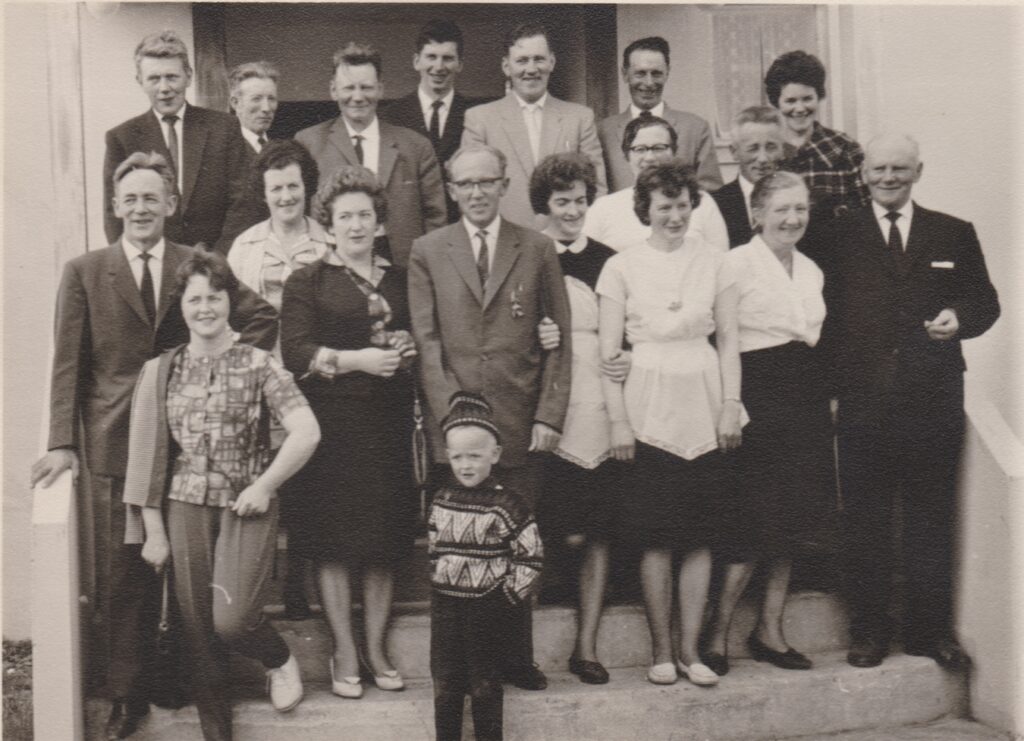
In fact, this remarkable couple gave more than just the land. They also gave their time, energy, and hard work for the good of the Strandir community and the settlement around Steingrímsfjörður. They were deeply committed to all aspects of local life and culture and were strong supporters of community progress and social activities. The ideals of the Icelandic youth association movement (Ungmennafélagshreyfingin) were in their blood. They understood the importance of volunteerism and gave generously of themselves.
Their contributions are truly exemplary. Were Benedikt and Ragnheiður alive today, they would be called social pioneers. This memorial square honors their legacy but is also meant as encouragement and recognition of others who give their time and effort for the good of the community—without expecting payment for every task.
The community center Sævangur and the sports field are closely linked to social innovation and local initiative. Many people in the region took part in their construction through volunteer labor. The same spirit lives on in the current activities at Sævangur, which now houses the Sheep Farming Museum and a cultural center. It is good for people today to look back with gratitude to earlier generations who paved the way, never shied away from hard work, and tackled challenges with energy and joy for life.
The memories live on.
Rætur (Roots)
The memorial square is named Rætur—Roots and it is a place for all kinds of good memories. The name refers to people’s connection to their childhood homes and the area where the grow up and cherished places. At the same time, it also nods to the twisted driftwood roots (rekaviðarhnyðjur) that are commonly found on the shores of Strandir. The driftwood is strongly connected to the images of Strandir area. The square is built using local materials: turf, stone, and driftwood logs.
